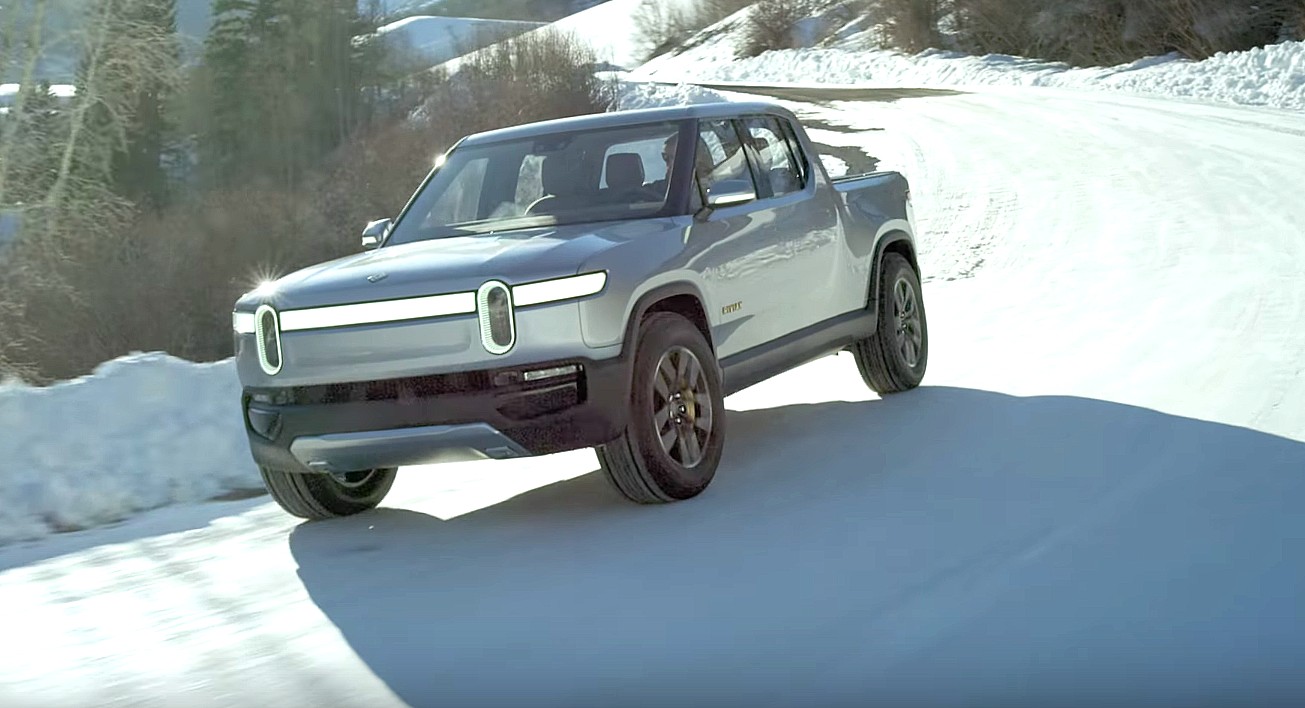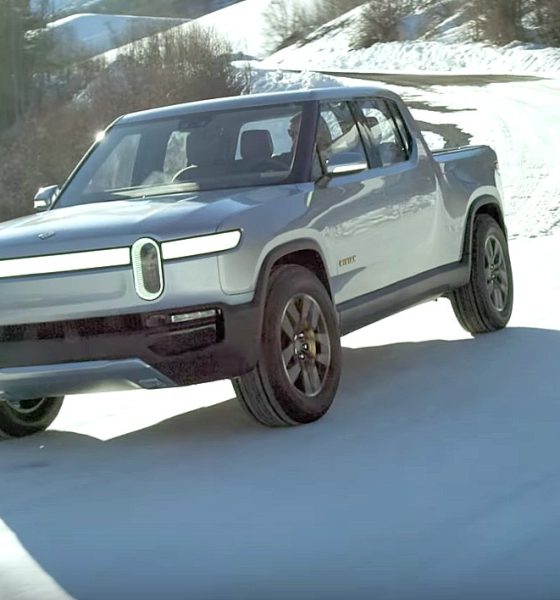Updated 6:35 PM ET: Rivian statement added and lede and headline updated for accuracy.
Rivian Automotive said it would recall 502 2022 R1T all-electric trucks in a recall issued by the NHTSA on May 10. The R1T may have improperly calibrated front passenger airbags due to a miscalibrated seat sensor, a defect that will require Rivian to replace the front passenger seat free of charge.
“Rivian Automotive, LLC (Rivian) is recalling certain 2022 R1T vehicles,” the recall summary on the NHTSA website states. “The Occupant Classification System (OCS) may not deactivate the airbag when a child or child seat occupies the front passenger seat. As such, these vehicles fail to comply with the requirements of Federal Motor Vehicle Safety Standard number 208, ‘Occupant Crash Protection.’”
The recall will require R1T owners to visit any of the automaker’s service centers across the country for a free replacement of the entire front passenger seat.
In the Safety Recall Report issued by the agency, it said Rivian vehicles produced from September 21, 2021, to May 12, 2022, would be possibly affected by the airbag defect. Rivian stopped building vehicles with suspect seat assemblies on May 12. The population of 502 vehicles was determined by supplier seat manufacturing records, seat calibration data, and Rivian component traceability information. “Due to a defect during supplier manufacturing of the seat, the calibration of the OCS does not perform consistently,” the description of the cause said.
Rivian lists its supplier for the tainted part as Hyundai Transys Michigan, LLC. According to the filing, “In March 2022, deviations in the OCS performance were identified in the seat production by Rivian. Subsequently, the calibration system was investigated to evaluate root cause.” MGA Research Corporation then provided Rivian with a report in April 2022 that included test results that indicated the airbag may not be automatically deactivated when it was tested. Rivian said that it is not aware of any accidents or injuries related to the issue.
Rivian told Teslarati:
”Rivian has determined that on certain R1T vehicles, the front passenger seat may not deactivate the front passenger airbag as required if a child seat or child is in that seat. In the event of a crash which deploys the front passenger airbag, a seat with this improper calibration may increase the risk of injury for any child or child seat occupant sitting in the seat. We are contacting those with affected Rivian vehicles, and they will receive a passenger seat replacement free of charge at a Rivian service center. In the meantime, infants and children should not be placed in the front passenger seat of affected Rivian vehicles until a front passenger seat replacement is complete.”
The risk of safety caused by the airbag is due to the possible deployment of an airbag if a child or child seat occupies the front passenger seat of the vehicle. Airbags are dangerous for children age 12 and younger, according to the CDC. The agency also recommends never putting a rear-facing car seat in front of an airbag, as front passenger airbags can injure or even kill young children in the event of a crash.
Rivian will also be reimbursing owners for previous out-of-pocket repairs. However, the OCS and passenger seat for vehicles affected in the recall also are covered under the automaker’s 5-year/60,000-mile limited warranty.
Rivian will begin notifying affected customers not to seat children or child seats in the front passenger seat of affected vehicles as soon as possible through text, emails, and in-vehicle messaging. Rivian’s notifications will mail to owners starting on or before July 1.
I’d love to hear from you! If you have any comments, concerns, or questions, please email me at joey@teslarati.com. You can also reach me on Twitter @KlenderJoey, or if you have news tips, you can email us at tips@teslarati.com.

News
Tesla is not sparing any expense in ensuring the Cybercab is safe
Images shared by the longtime watcher showed 16 Cybercab prototypes parked near Giga Texas’ dedicated crash test facility.
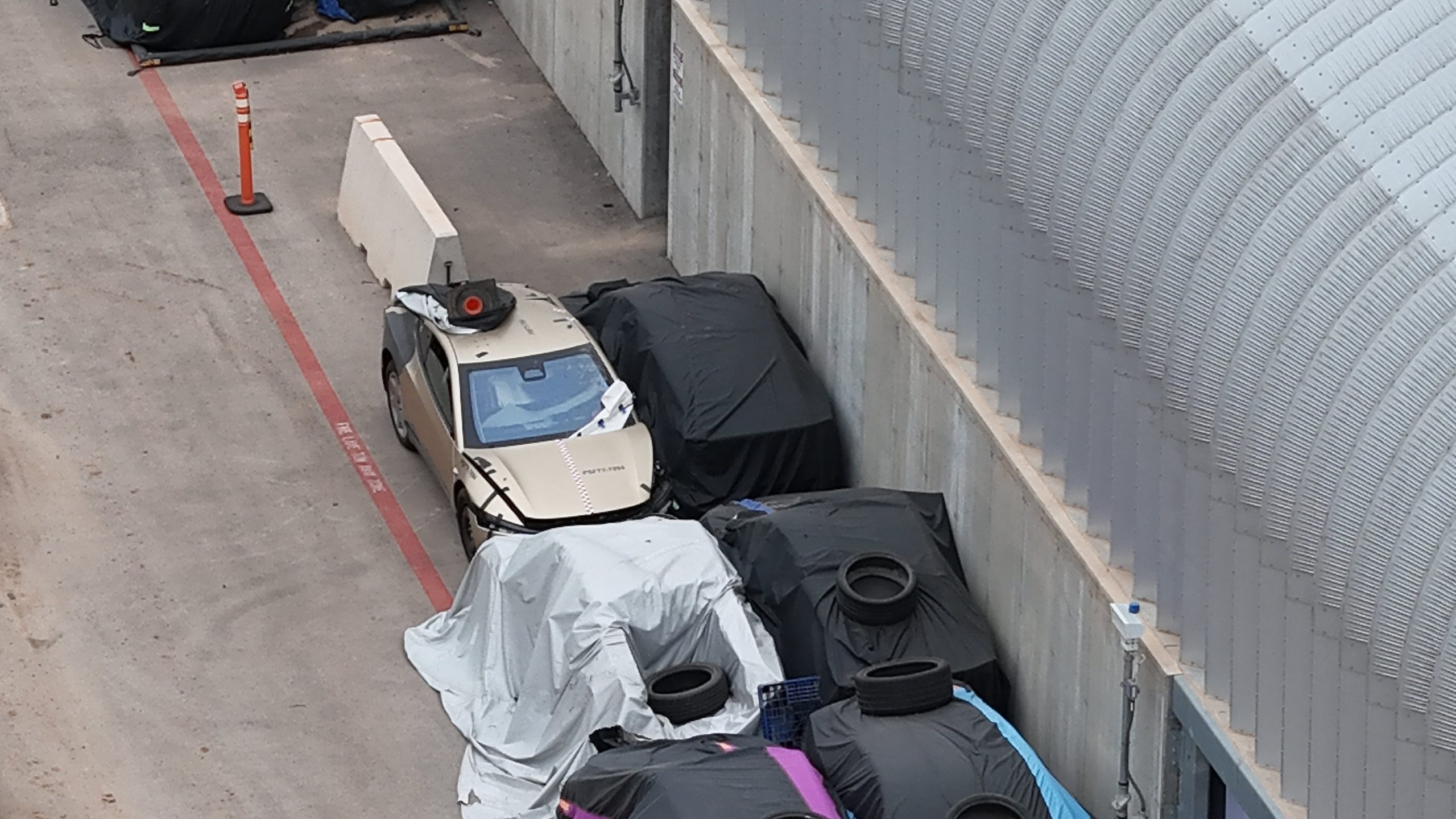
The Tesla Cybercab could very well be the safest taxi on the road when it is released and deployed for public use. This was, at least, hinted at by the intensive safety tests that Tesla seems to be putting the autonomous two-seater through at its Giga Texas crash test facility.
Intensive crash tests
As per recent images from longtime Giga Texas watcher and drone operator Joe Tegtmeyer, Tesla seems to be very busy crash testing Cybercab units. Images shared by the longtime watcher showed 16 Cybercab prototypes parked near Giga Texas’ dedicated crash test facility just before the holidays.
Tegtmeyer’s aerial photos showed the prototypes clustered outside the factory’s testing building. Some uncovered Cybercabs showed notable damage and one even had its airbags engaged. With Cybercab production expected to start in about 130 days, it appears that Tesla is very busy ensuring that its autonomous two-seater ends up becoming the safest taxi on public roads.
Prioritizing safety
With no human driver controls, the Cybercab demands exceptional active and passive safety systems to protect occupants in any scenario. Considering Tesla’s reputation, it is then understandable that the company seems to be sparing no expense in ensuring that the Cybercab is as safe as possible.
Tesla’s focus on safety was recently highlighted when the Cybertruck achieved a Top Safety Pick+ rating from the Insurance Institute for Highway Safety (IIHS). This was a notable victory for the Cybertruck as critics have long claimed that the vehicle will be one of, if not the, most unsafe truck on the road due to its appearance. The vehicle’s Top Safety Pick+ rating, if any, simply proved that Tesla never neglects to make its cars as safe as possible, and that definitely includes the Cybercab.
Elon Musk
Tesla’s Elon Musk gives timeframe for FSD’s release in UAE
Provided that Musk’s timeframe proves accurate, FSD would be able to start saturating the Middle East, starting with the UAE, next year.
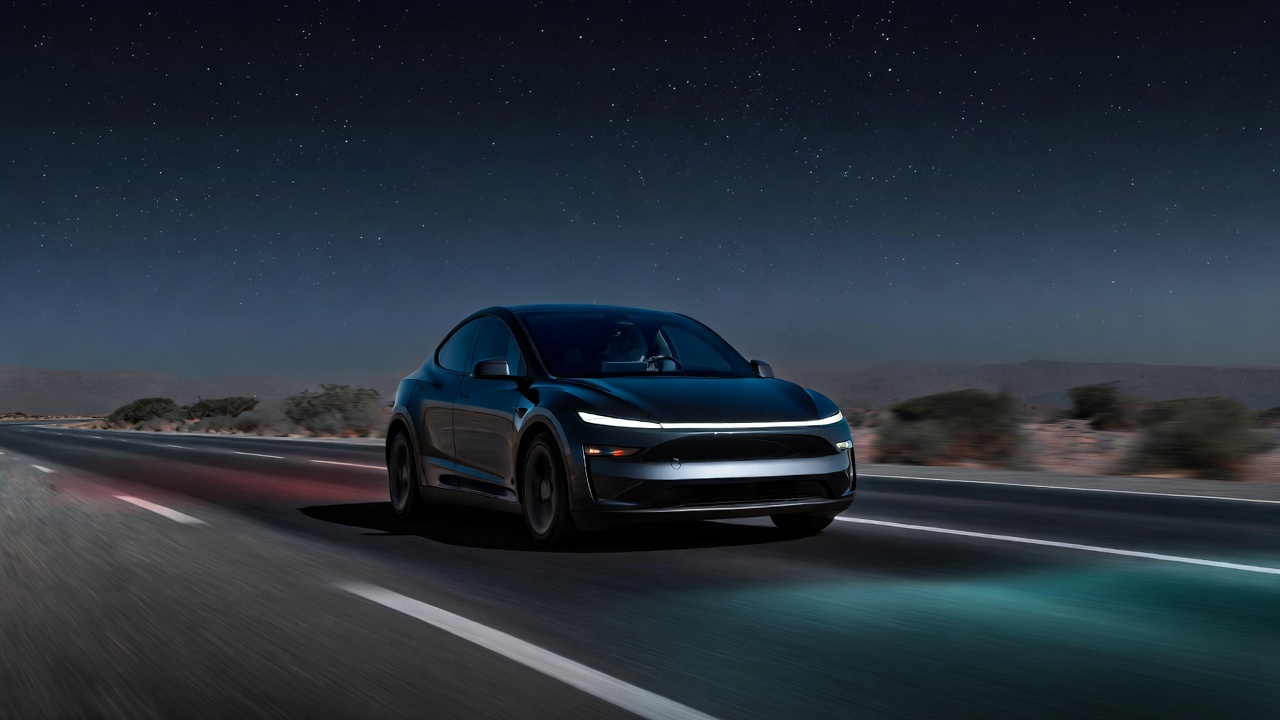
Tesla CEO Elon Musk stated on Monday that Full Self-Driving (Supervised) could launch in the United Arab Emirates (UAE) as soon as January 2026.
Provided that Musk’s timeframe proves accurate, FSD would be able to start saturating the Middle East, starting with the UAE, next year.
Musk’s estimate
In a post on X, UAE-based political analyst Ahmed Sharif Al Amiri asked Musk when FSD would arrive in the country, quoting an earlier post where the CEO encouraged users to try out FSD for themselves. Musk responded directly to the analyst’s inquiry.
“Hopefully, next month,” Musk wrote. The exchange attracted a lot of attention, with numerous X users sharing their excitement at the idea of FSD being brought to a new country. FSD (Supervised), after all, would likely allow hands-off highway driving, urban navigation, and parking under driver oversight in traffic-heavy cities such as Dubai and Abu Dhabi.
Musk’s comments about FSD’s arrival in the UAE were posted following his visit to the Middle Eastern country. Over the weekend, images were shared online of Musk meeting with UAE Defense Minister, Deputy Prime Minister, and Dubai Crown Prince HH Sheikh Hamdan bin Mohammed. Musk also posted a supportive message about the country, posting “UAE rocks!” on X.
FSD recognition
FSD has been getting quite a lot of support from foreign media outlets. FSD (Supervised) earned high marks from Germany’s largest car magazine, Auto Bild, during a test in Berlin’s challenging urban environment. The demonstration highlighted the system’s ability to handle dense traffic, construction sites, pedestrian crossings, and narrow streets with smooth, confident decision-making.
Journalist Robin Hornig was particularly struck by FSD’s superior perception and tireless attention, stating: “Tesla FSD Supervised sees more than I do. It doesn’t get distracted and never gets tired. I like to think I’m a good driver, but I can’t match this system’s all-around vision. It’s at its best when both work together: my experience and the Tesla’s constant attention.” Only one intervention was needed when the system misread a route, showcasing its maturity while relying on vision-only sensors and over-the-air learning.
News
Tesla quietly flexes FSD’s reliability amid Waymo blackout in San Francisco
“Tesla Robotaxis were unaffected by the SF power outage,” Musk wrote in his post.
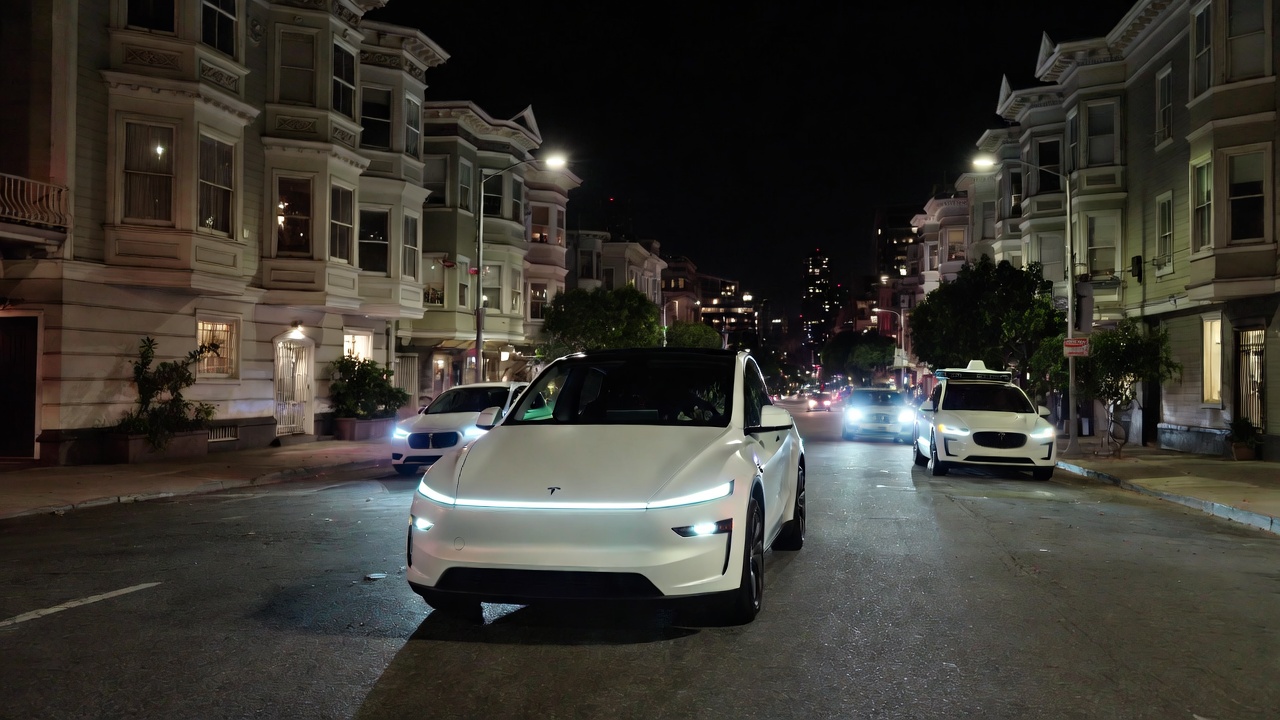
Tesla highlighted its Full Self-Driving (Supervised) system’s robustness this week by sharing dashcam footage of a vehicle in FSD navigating pitch-black San Francisco streets during the city’s widespread power outage.
While Waymo’s robotaxis stalled and caused traffic jams, Tesla’s vision-only approach kept operating seamlessly without remote intervention. Elon Musk amplified the clip, highlighting the contrast between the two systems.
Tesla FSD handles total darkness
The @Tesla_AI account posted a video from a Model Y operating on FSD during San Francisco’s blackout. As could be seen in the video, streetlights, traffic signals, and surrounding illumination were completely out, but the vehicle drove confidently and cautiously, just like a proficient human driver.
Musk reposted the clip, adding context to reports of Waymo vehicles struggling in the same conditions. “Tesla Robotaxis were unaffected by the SF power outage,” Musk wrote in his post.
Musk and the Tesla AI team’s posts highlight the idea that FSD operates a lot like any experienced human driver. Since the system does not rely on a variety of sensors and a complicated symphony of factors, vehicles could technically navigate challenging circumstances as they emerge. This definitely seemed to be the case in San Francisco.
Waymo’s blackout struggles
Waymo faced scrutiny after multiple self-driving Jaguar I-PACE taxis stopped functioning during the blackout, blocking lanes, causing traffic jams, and requiring manual retrieval. Videos shared during the power outage showed fleets of Waymo vehicles just stopping in the middle of the road, seemingly confused about what to do when the lights go out.
In a comment, Waymo stated that its vehicles treat nonfunctional signals as four-way stops, but “the sheer scale of the outage led to instances where vehicles remained stationary longer than usual to confirm the state of the affected intersections. This contributed to traffic friction during the height of the congestion.”
A company spokesperson also shared some thoughts about the incidents. “Yesterday’s power outage was a widespread event that caused gridlock across San Francisco, with non-functioning traffic signals and transit disruptions. While the failure of the utility infrastructure was significant, we are committed to ensuring our technology adjusts to traffic flow during such events,” the Waymo spokesperson stated, adding that it is “focused on rapidly integrating the lessons learned from this event, and are committed to earning and maintaining the trust of the communities we serve every day.”
